7 Ways to Go Green With Your Dog on Earth Day
I live near Seattle – a city with a lot of green space, and surrounded by sparkling waters and lush green forests.
There is a lot of nature and beauty to appreciate and be thankful for here, so protecting the environment is something that is in the forefront of dog owner’s minds.
Updated: December 23, 2022
Our dog’s environmental impact is especially on our minds around Earth Day, which falls on April 22nd each year.
I know that the desire to live with pets in a more environmentally-responsible way is not exclusive to Western Washington though.
I used to work as an environmental scientist and saw cities and counties around the country hold Earth Day events for pet owners.
I thought I’d share some of what I’ve learned about how dogs impact the environment over the years and what you can do about it.
Your Dog’s Impact on the Environment
The impact a person or thing has on the earth is called a carbon footprint – the amount of carbon dioxide and other carbon compounds emitted due to the consumption of fossil fuels by a particular person, group, thing, etc.
In the case of pets, this environmental impact is often called their “Carbon Pawprint”.
A pet’s Carbon Pawprint includes the carbon emitted by:
- The creation of the products they use
- The transportation of those products from where they are made to your home
- The resources needed to grow the meat and vegetables their food is made of (land, water, etc.)
- Pet waste management
A 2009 study by New Zealand’s Victoria University of Wellington concluded that pet dogs have carbon pawprints double that of a typical SUV. That’s a huge impact!
So what can you do to help your pet “go green” – to reduce their environmental impact?
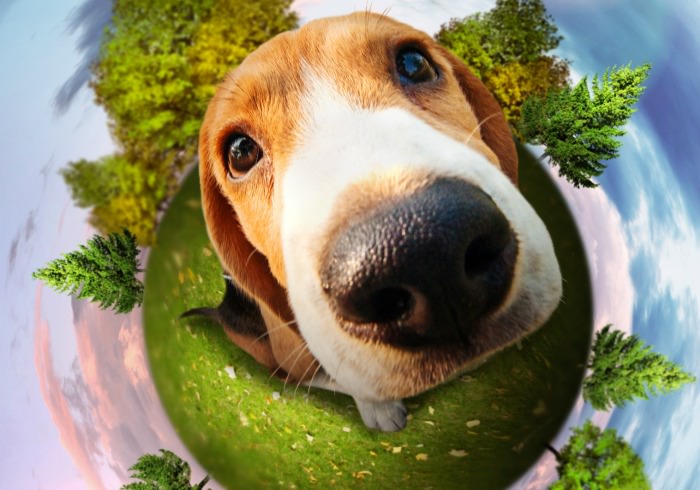
How to Reduce Your Dog’s Carbon Pawprint
There are many ways you can reduce your dog’s Carbon Pawprint. Don’t feel overwhelmed though.
Even if everyone only did one of these, it would have a big, positive impact on the Earth.
1) Scoop the Poop
You can imagine the tons of waste produced by 153,000 dogs pooping at least once a day (the estimated number of dogs in Seattle alone)?
Contrary to what some people believe, dog poop is not “natural” – at least not in the quantity produced in an urban environment that has more pavement than grass.
Pet waste contains bacteria that can wash into waterways when it rains, resulting in closed swimming beaches, and can make people sick.”
Always remember to carry poop bags with you and scoop the poop… even if no one is watching.
If you’re not convinced you need to scoop your dog’s poop, check out this catchy little tune:
Serious bonus points for picking up someone else’s dog poop while you are at it (I do it frequently and it’s not as gross as you think).
2) Take public transportation to the dog park
Leashed dogs, and smaller dogs inside a carrier, can ride on the King Country Metro (Seattle) bus system.
Maybe they can where you live too?
Taking public transportation, instead of driving, not only reduces carbon emissions but can also reduce the stress of being stuck in traffic or dealing with “bad drivers”.
In Seattle, dogs are not allowed to occupy seats on the bus – they must remain either on the floor or sit on their owners lap – and owners must pay a fare for their dog (unless it’s a small dog that can remain on their owner’s lap) but we’re pretty fortunate to have this option.
It’s easy to find bus directions to a local dog park, or any destination in King County for that matter, using the King County Metro Trip Planner.
Bonus points if you also use the bus to take your dog to the groomer or to doggy daycare.
3) Shop locally made
We’re lucky to have a lot of farmer’s markets in Seattle. Check in your area to see if you have any farmer’s markets or hand-made bazars.
Buying what your pet needs – beds, leashes, treats, etc. – from local artisans reduces carbon emissions produced when shipping products from the factory to your local store or home.
It also eliminates the need for shipping/packing material.
Not all farmer’s markets are open all year round or are dog friendly but in Seattle the Ballard Farmer’s Market is one that is both.
Dogs are also allowed at the Seattle Neighborhood Farmers Markets which include the U-District, Capitol Hill, West Seattle, Columbia City, Lake City, Phinney and Magnolia farmer’s markets.
If you plan to bring your dog to a farmer’s market with you, be sure to check their pet policy before you go.
Common requirements, if dogs are allowed, are that they must be on a short leash, you must pick up after your pet, and you and your pet need to be considerate of other shoppers, respectful of vendors and food products, and to follow common sense rules about good behavior.
If you can’t find what you need at a farmer’s market, the next best thing is buying from small, local, independent pet stores or a local pet store chain.
Our favorite in Seattle is All the Best Pet Care (also where I get the anesthesia-free teeth cleaning done for Chester).
Bonus points if you take the bus any of these places! 🙂
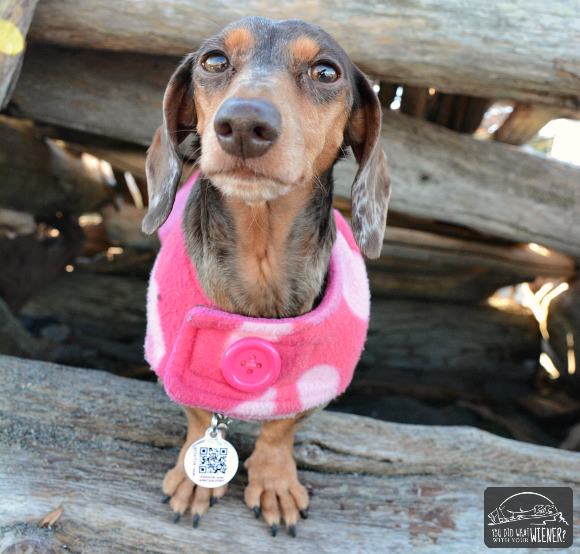
4) Go digital with your dog’s ID
If you buy a traditional, old-school engraved ID tag for your pet you will have to throw it out and get a new one every time you move or get a new phone number.
So you don’t waste the metal materials, and there is are no carbon emissions produced getting the new tag to you, get one that you can use over and over again.
A digital ID tag, like one from PetHub.com that has a QR code (and the phone number for a staffed, 24-hour emergency lost pet hotline) on the back and links to an online profile you can update every time your contact information changes.
Bonus points here for us because PetHub is a local Seattle company… so we’re shopping local.
5) Recycle
Donate gently used pet supplies like toys, bowls, blankets, coats, etc. to a shelter or rescue to reduce the need for new materials and help keep stuff out of landfills.
Also, be sure to recycle the packaging of what you do buy and choose products that are made with recycled materials when you can.
Bonus points if you are choosy about what you buy and don’t buy more than your pet needs in the first place.
6) Don’t overfeed your pet
The production of meat, and beef in particular, takes a large toll on the environment because of the resources it takes to produce that meat.
In addition to potentially making your dog fat and hurting their health, feeding your pet more than recommended (check the package for feeding recommendations) uses more “protein-producing resources” than are needed.
Bonus points if you feed your dog raw food.
Frozen, prepared raw meals are easy and, since the ingredients are less processed, it uses less energy to make.
Bonus, bonus points if you buy your raw food from a local company (In Seattle we have Darwin’s Natural Pet Products and the Natural Pet Pantry).
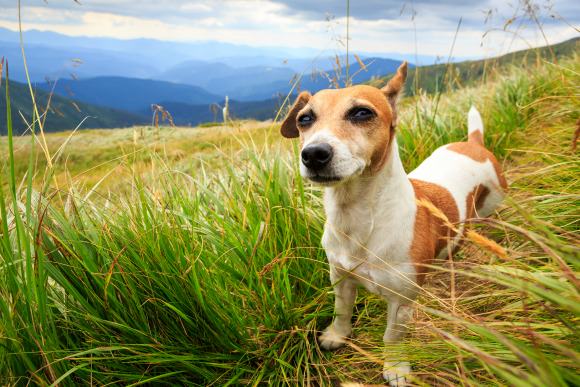
7) Tread gently on the trails
What better way to celebrate Earth Day with your dog than getting out for a walk or hike in nature?
People and dogs can have a huge impact on the the natural environment, especially when a lot of popular parks and trails see 100s of human and canine visitors a day.
When you are hiking a local trail, or otherwise spending time in nature, with your pup be sure fido is following the dog version of Leave No Trace principles designed to keep nature wild.
Bonus points if you choose to minimize the human and canine impact by hiking a less crowded trail like like one of these 6 “Unknown” Dog Friendly Trails Near Seattle.
Final Thoughts
Remember, every small step to help reduce your dog’s carbon pawprint is valuable.
Doing the right thing for the environment feels good and it will ensure that the areas you live in, or like to visit, stay beautiful and wild.
I know not every suggestion here may be practical for your lifestyle.
Remember though, it’s not about doing everything right, it’s about doing one or two simple things right.
If everyone makes even one small change, together it could have a big impact.
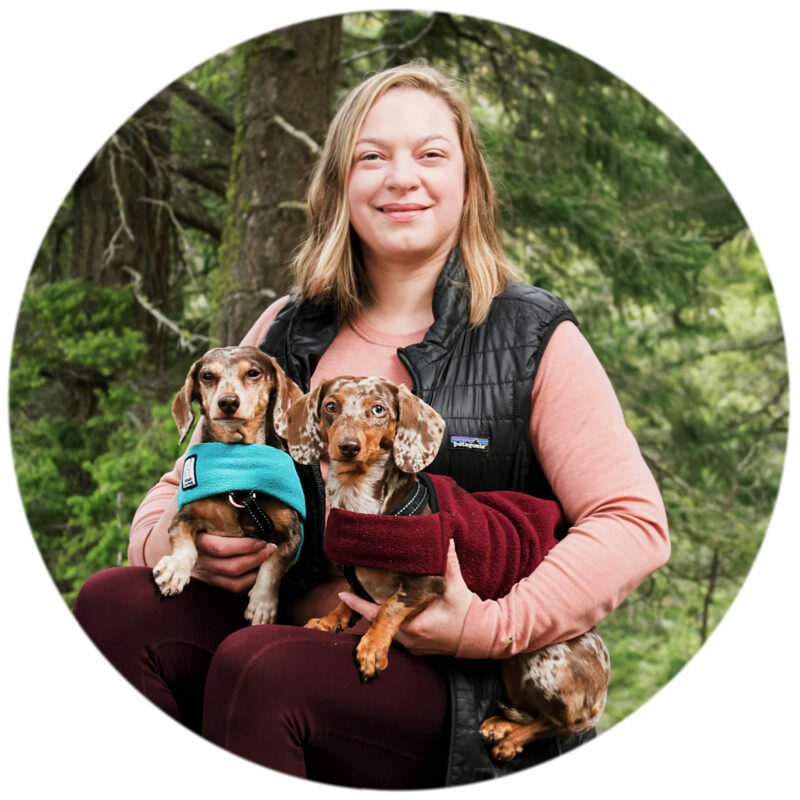
About the Author
Hi, I’m Jessica. I’ve been studying the Dachshund breed since 2007, owned 3 of my own, and shared in the lives of thousands of others through their owner’s stories. When I’m not sharing what I know on this blog, you can find me hiking, camping, and traveling with my adventurous wiener dogs.

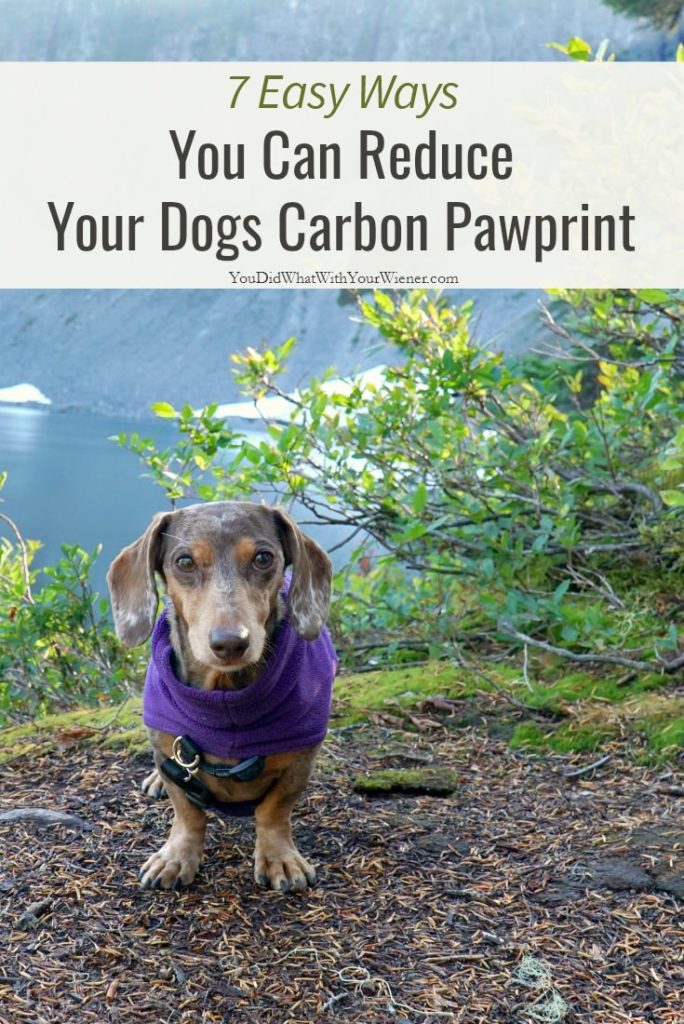
And easy to follow list. We even scoop the poop regularly at home. People say we don’t have to worry about it, because we have raw fed dogs, but I still think of some of the things you’ve shared about dog poop and it’s impact on the environment, so I pick it up daily (or every other day at least). I like having a clean yard and I think our dogs do too.
Huh. I’ve never heard that what a dog eats influences the bacteria in their poo. I thought it was a result of their digestive process and the kind of bacteria in their gut. I’ll have to look into that. A clean yard with no stinky poo to step in is a wonderful thing either way 🙂 I pick up the poo in our yard too but I secretly wish I could hire someone to do it. Ha, ha. I’l gladly take care of the stuff on the street or trails myself but I’m less motivated to do it at home.
Great post. We do a lot of these, but the “tread gently on the trails” is a good one! Really dig that “doodie” video, too! We were vacationing in Lake George one time with my Mom and young daughter, just purchased ice cream, sat on a bench looking at the beautiful lake, when a guy with big dog left a big dog doodie – right in front of us on the sidewalk – and kept going! So the message you have here is so important. After all, it is our Earth – and up to us to keep it clean and protect it.
Mmmmm… poo… ice cream… poo… Yuck! Because I’m a water quality geek, I would have freaked out (at least inside) that he did it so close to a lake too. I’ve learned that the beliefs about picking it dog doodie are very different in different areas of the country. It seems to be us City folk where the habit is most ingrained. Too bad though. It’s an important thing for everyone to do.
Great article!
We often forget what a big impact lots of seemingly small and mundane things can have in the big picture. Everybody has to do their best for all of us to prosper.
Thanks for the article. As a woman in her 70’s who has had dachshunds since the first grade, the article sets out some (but not all) of the breed’s qualities. They are natural comedians. Having shared my home with breeds of all sizes (up to and including my dachshund/great Dane duo), I always find myself with at least one “wiener dog” in residence.